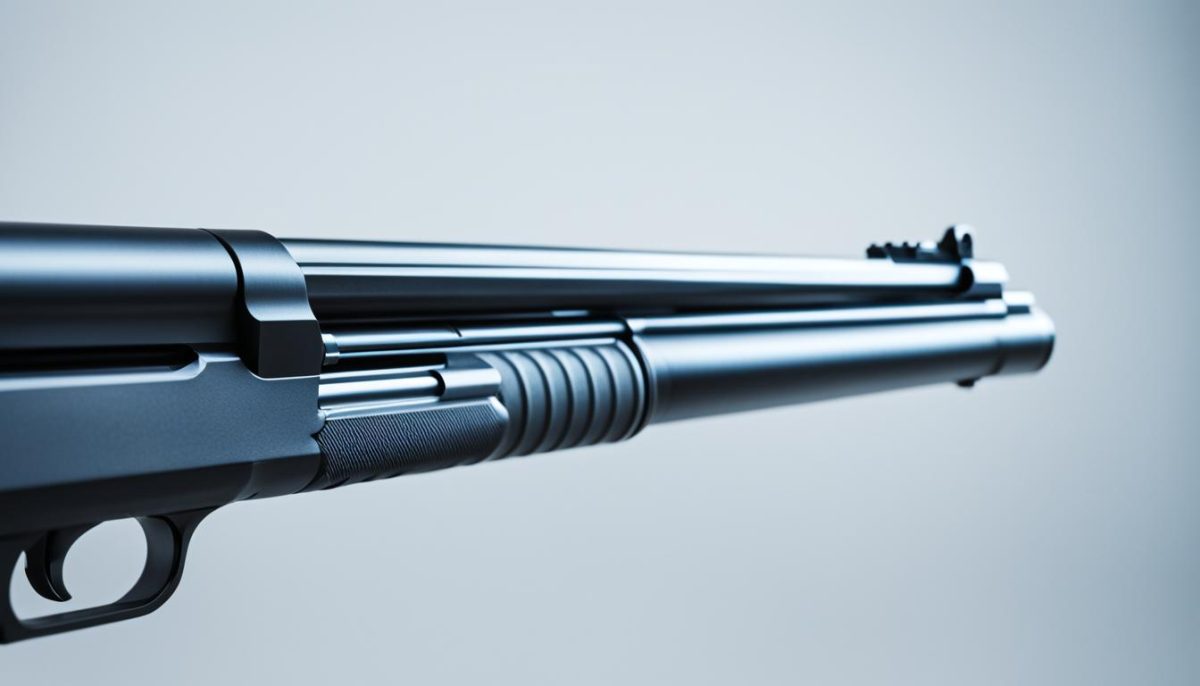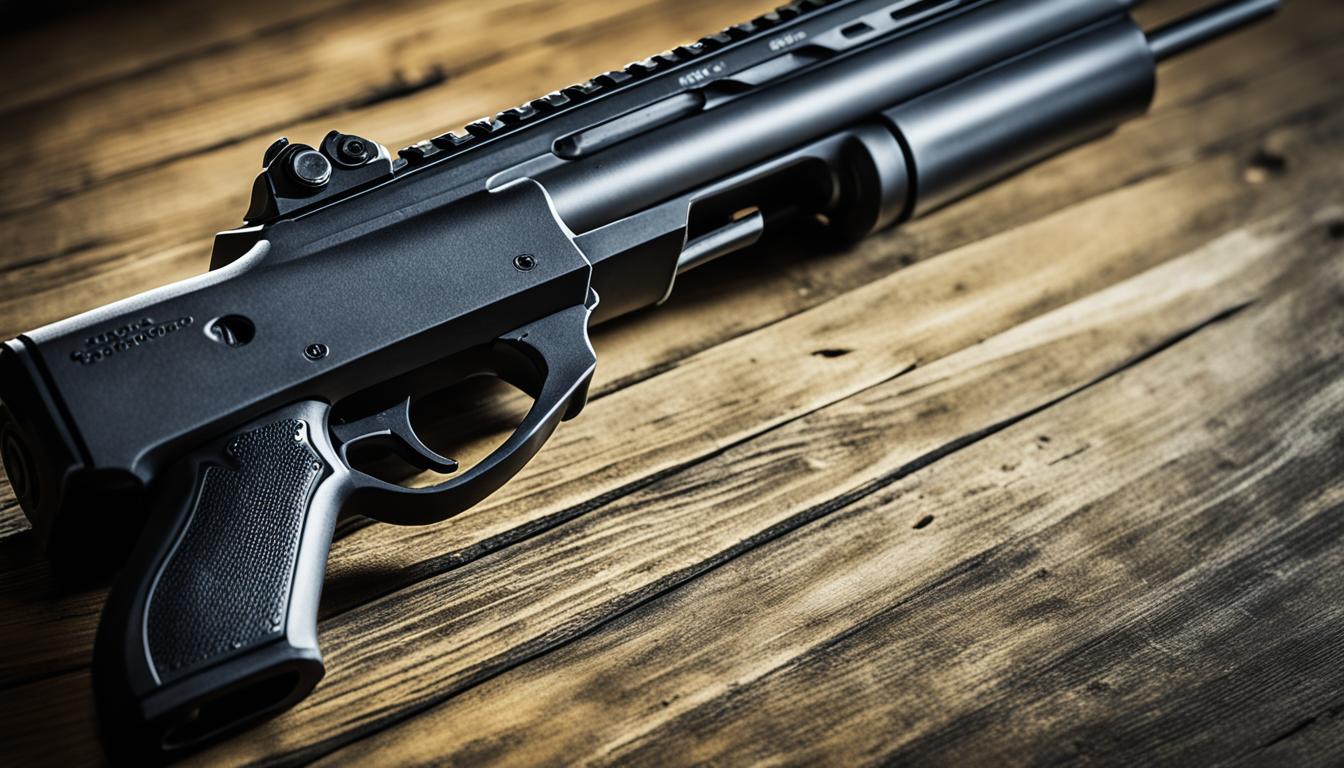In the United States, the legality of short barreled shotguns has long been a topic of debate and confusion. These firearms, which have barrels shorter than the standard 18 inches, are subject to strict restrictions and regulations under the National Firearms Act. In this article, we’ll explore the reasons why short barreled shotguns are considered illegal and the historical context behind these laws.
To understand the legal definition of a short barreled shotgun, we’ll delve into the specifics of the National Firearms Act and the ATF regulations that govern these firearms. We’ll also examine the historical factors that led to the rise of organized crime in the 1930s, and how that shaped the legislation surrounding short barreled shotguns.
Understanding the Legal Definition of a Short Barreled Shotgun
When it comes to firearm regulations, the legal definition of a short barreled shotgun plays a crucial role. According to the legal statutes, a short barreled shotgun is defined as a shotgun with a barrel length of less than 18 inches or an overall length of less than 26 inches. These firearms are subject to additional regulations under the National Firearms Act, which require special registration, taxation, and compliance measures for their ownership and possession.
Shotguns with Barrels Under 18 Inches
The legal definition of a short barreled shotgun is based on the length of the firearm’s barrel. Shotguns with barrels measuring less than 18 inches are considered short barreled and fall under the regulatory framework of the National Firearms Act. This length restriction is in place to address the unique characteristics and potential misuse of these shorter shotguns.
The National Firearms Act’s Regulations
The National Firearms Act (NFA) is the primary legislation governing the ownership and possession of short barreled shotguns in the United States. Under the NFA, individuals seeking to acquire or possess a short barreled shotgun must undergo a thorough application process, which includes a background check, payment of a tax, and registration of the firearm with the Bureau of Alcohol, Tobacco, Firearms and Explosives (ATF). These additional requirements are designed to enhance public safety and mitigate the potential risks associated with these specialized firearms.
| Regulation | Requirement |
|---|---|
| Barrel Length | Less than 18 inches |
| Overall Length | Less than 26 inches |
| Registration | Mandatory registration with the ATF |
| Tax | $200 transfer tax |
| Background Check | Thorough background investigation |
By understanding the legal definition and the regulatory framework surrounding short barreled shotguns, gun owners and enthusiasts can ensure they comply with the applicable laws and regulations. Navigating these nuances is crucial for responsible firearm ownership and maintaining public safety.

“The legal definition of a short barreled shotgun is designed to address the unique characteristics and potential misuse of these specialized firearms.”
Why Are Short Barreled Shotguns Illegal?
Short barreled shotguns have long been a source of concern for lawmakers and law enforcement officials in the United States. These firearms, with their reduced barrel length, are often perceived as posing a greater threat to public safety compared to their longer-barreled counterparts. Several key reasons underpin the illegality of short barreled shotguns in the country.
First and foremost, the increased concealability of short barreled shotguns is a significant factor behind their prohibition. With barrels measuring less than 18 inches, these firearms can be easily hidden from view, making them a potential tool for criminal activities. This heightened concealability raises concerns over the potential for these weapons to be used in violent crimes, where their compact size could provide an advantage to individuals seeking to evade detection.
Furthermore, the perceived greater danger posed by short barreled shotguns is another justification for their legal restrictions. Shorter barrels can potentially reduce the accuracy and control of these firearms, leading to an increased risk of collateral damage or unintended harm in high-stress situations. This concern is particularly acute in urban environments, where the close proximity of buildings and bystanders amplifies the potential for unintended consequences.
Lastly, the historical association of short barreled shotguns with organized crime and illicit activities has contributed to their continued legal status. During the rise of organized crime in the 1930s, these firearms were often favored by criminal elements due to their concealability and perceived intimidation factor. This stigma has persisted, further fueling the public safety arguments against their ownership and use.
“The increased concealability and perceived greater danger of short barreled shotguns have made them a target of legal restrictions, as lawmakers and law enforcement seek to prioritize public safety and mitigate the potential for these firearms to be misused in criminal activities.”
Ultimately, the reasons for the illegality of short barreled shotguns in the United States revolve around concerns over their increased concealability, potential for criminal misuse, and the perceived greater danger they pose to public safety. These factors have led to their classification as a restricted firearm, subject to the regulations of the National Firearms Act and other relevant legislation.
Historical Background and Reasoning
The restrictions on short barreled shotguns have their roots in the historical context of the 1930s, a period when organized crime groups like the mafia were utilizing these types of firearms in their illicit activities. In response to the rise of gun violence associated with the growth of organized crime, the National Firearms Act was enacted in 1934 to regulate the ownership and possession of these and other types of firearms.
The Rise of Organized Crime in the 1930s
During the 1930s, the United States witnessed a surge in organized criminal activity, with groups like the mafia gaining significant power and influence. These criminal organizations often relied on short barreled shotguns as a preferred weapon of choice, owing to their compact size and devastating firepower. The prevalence of these firearms in the hands of organized criminals prompted lawmakers to take action, leading to the implementation of the National Firearms Act and the subsequent restrictions on short barreled shotguns.
The historical context of the 1930s and the rise of organized crime played a pivotal role in shaping the legal landscape surrounding short barreled shotguns, a legacy that continues to influence firearm regulations to this day.

